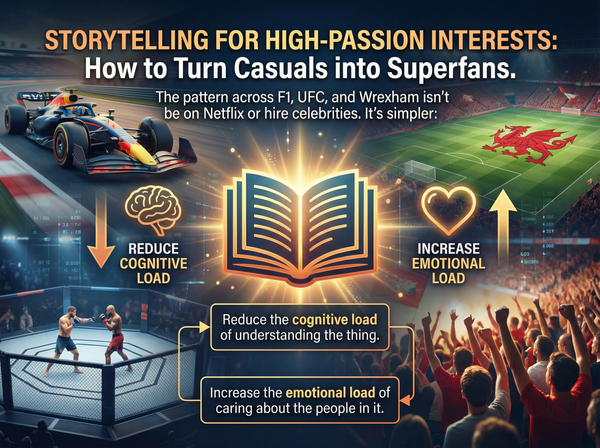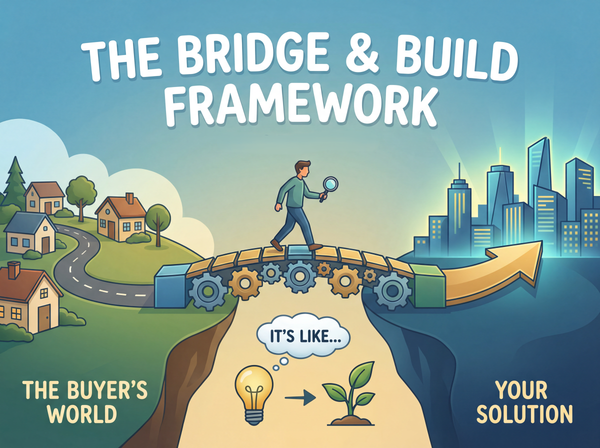From Idea to Million-Dollar Reality: The Startup Journey from 0 to 1
Every ground-breaking company starts as a spark – an idea scribbled on a napkin or a sudden realization of an unmet need.
The journey from this initial flicker to a thriving business generating $1 million in annual revenue is often described as going from "0 to 1." It's a challenging, often chaotic, but ultimately rewarding path that requires immense dedication, strategic thinking, and a relentless focus on building something people truly want and need.
This post will explore the essential steps involved in this transformative journey, focusing on how to acquire those crucial early customers and the fundamental importance of building a scalable product or service from the outset.
The Odyssey from 0 to Your First Million
Reaching $1 million in annual revenue is a significant milestone for any startup. It signifies that you've moved beyond the initial validation phase and have a business model that is gaining traction.
This journey typically involves several distinct stages:
- Problem-Solution Fit (0 to Initial Revenue): This is where the idea is born and tested. The primary focus is on deeply understanding the problem you are trying to solve and validating that your proposed solution actually addresses it for a specific group of people.
This involves extensive customer research, building a Minimum Viable Product (MVP), and iterating based on early feedback. Revenue at this stage might be non-existent or minimal. - Product-Market Fit (Initial Revenue to ~$100k - $500k ARR): Having validated your solution, the next stage is finding a repeatable and scalable way to deliver that solution to a larger market. This involves refining your product based on early adopter feedback, identifying your ideal customer profile, and starting to see consistent, albeit perhaps small, revenue.
The focus shifts to proving that there is a real market need and people are willing to pay for your offering. - Scaling the Go-to-Market (~$100k - $500k to $1M ARR): Once you have a solid product-market fit, the challenge becomes efficiently reaching and acquiring more customers. This involves building out your sales and marketing strategies, optimizing your customer acquisition channels, and starting to put in place the processes and team needed to handle growth.
This is where the focus on acquiring customers at a larger scale becomes paramount.
The Lifeline: How to Get Those Crucial Early Customers
Acquiring your first customers is critical. It's the real-world validation that your idea has merit and the fuel that will power your initial growth.
Here are key steps to getting those early adopters:
- Define Your Ideal Customer Profile (ICP): You can't sell to everyone. Be crystal clear about who your ideal customer is. Understand their demographics, psychographics, pain points, and where they spend their time (online and offline). This focus will make your customer acquisition efforts far more effective.
- Leverage Your Network: Start with who you know. Reach out to friends, family, former colleagues, and connections who might fit your ICP or know people who do. Personal introductions can be incredibly valuable in the early days.
- Be Where Your ICP Is: Go to the online communities, forums, social media groups, and real-world events where your ideal customers congregate. Engage in conversations, offer value, and subtly introduce your solution when appropriate.
- Content Marketing: Create valuable content (blog posts, articles, videos, podcasts) that addresses the pain points of your ICP. This helps build authority, attracts organic traffic, and positions you as a helpful resource.
- Direct Outreach (Personalized): For B2B startups, personalized cold email or LinkedIn outreach can be effective. Focus on understanding their specific challenges and how your solution can directly help them. Avoid generic, mass messages.
- Offer Early Bird Incentives/Beta Programs: Entice early adopters with special pricing, exclusive access, or the opportunity to shape the product's development. This can help overcome initial hesitation.
- Seek Design Partnerships: Collaborate with a few key customers who represent your ICP. Work closely with them to refine your product in exchange for their valuable feedback and testimonials.
- Utilize Online Advertising (Strategically): Once you have a clearer understanding of your ICP and messaging, targeted online advertising platforms (like Google Ads or social media ads) can help you reach a wider audience efficiently. Start small and optimize based on performance.
- Nail Your Pitch and Messaging: Clearly articulate the problem you solve, your unique value proposition, and the benefits of your solution in a concise and compelling way.
- Deliver Exceptional Early Customer Service: Your first customers are your most valuable assets. Go above and beyond to ensure they have a positive experience. Their testimonials and referrals will be invaluable.
The Engine for Growth: Why Scalability is Non-Negotiable
As you start acquiring customers and proving your model, the concept of scalability becomes paramount. A scalable product or service is one that can handle a growing number of users or customers without a proportional increase in resources (cost, infrastructure, human capital).
Without scalability, hitting $1 million in revenue and beyond becomes incredibly difficult, if not impossible.
Here's why scalability is crucial:
- Handling Increased Demand: As customer acquisition efforts succeed, your product or service needs to be able to handle a larger workload without performance issues or system crashes.
- Maintaining Profitability: Scalability often leads to improved economies of scale. As your user base grows, the cost per user ideally decreases, increasing your profit margins.
- Efficient Operations: Scalable businesses have streamlined processes and automated tasks where possible, allowing them to operate efficiently even at a larger size.
- Attracting Investment: Investors look for businesses that have the potential for significant growth. A scalable model demonstrates that your business can handle and capitalize on that growth.
- Competitive Advantage: Scalability allows you to grow faster and more efficiently than less scalable competitors, giving you a significant edge in the market.
Building for scalability from the beginning means making conscious decisions about your technology stack, operational processes, and team structure with future growth in mind. It's easier to build scalability in early than to try and refactor a non-scalable system later.
Navigating the Challenges and Building for the Future
The path to $1 million is not just about acquiring customers and scaling; it involves crucial internal considerations and continuous learning.
- Prudent Financial Management and Runway: Especially in the early days, understanding your burn rate (how quickly you're spending cash) and your runway (how long your money will last) is vital. Whether you are bootstrapping (funding yourself) or seeking external investment, disciplined financial management is key to survival and growth. Every dollar counts when you're building momentum towards your first million.
- Continuous Iteration and Feedback Loops: Your initial product or service is a starting point, not a final destination. Achieving product-market fit is an ongoing process, not a one-time event. Actively solicit and systematically gather feedback from your early customers. This goes beyond just asking "Do you like it?". Implement mechanisms like:
- Direct Customer Interviews: Have one-on-one conversations to understand their workflows, pain points, and how they actually use your solution.
- Surveys: Use targeted surveys to gather quantitative and qualitative feedback on specific features or the overall experience.
- Usage Data Analytics: Track how users interact with your product. Where do they get stuck? What features are most used? This provides objective insights into user behavior.
- Feedback Forms/Channels: Provide easy ways for users to submit suggestions or report issues. Use this feedback to iterate rapidly on your offering. Prioritize changes that address critical pain points or unlock significant value for your ideal customer. This iterative process ensures your product evolves in lockstep with customer needs and market demands, strengthening your product-market fit and making your offering more compelling to future customers.
- Defining and Tracking Key Metrics: In the resource-constrained environment of an early-stage startup, guesswork is expensive. Knowing what to measure and diligently monitoring your progress is vital for making informed, data-driven decisions. Forget vanity metrics; focus on KPIs that directly reflect the health and growth of your business towards that $1 million goal. Relevant metrics at this stage often include:
- Customer Acquisition Cost (CAC): How much does it cost you to acquire a new paying customer?
- Lifetime Value (LTV): How much revenue can you expect from a single customer over their relationship with you?
- Churn Rate: What percentage of your customers stop using your product/service over a given period? High churn can cripple growth.
- Conversion Rates: Measure conversions at each stage of your sales and marketing funnel (e.g., website visitor to lead, lead to trial, trial to paying customer).
- Monthly Recurring Revenue (MRR) / Annual Recurring Revenue (ARR) Growth: The ultimate measure of your revenue traction. Tracking these metrics helps you understand which customer acquisition channels are most effective, identify bottlenecks in your funnel, measure the impact of product changes, and make informed decisions about resource allocation. They provide a clear picture of whether your efforts are translating into sustainable revenue growth.
Conclusion
The journey from 0 to $1 million in annual revenue is a testament to a startup's ability to identify a real problem, build a compelling solution, and effectively reach and serve a growing customer base.
It requires a relentless focus on product-market fit, strategic customer acquisition, and the fundamental commitment to building a scalable business from day one.
While the path is challenging, by understanding these key elements and executing effectively, you can significantly increase your chances of transforming that initial spark into a thriving, million-dollar reality.
Keep Crushing!
- Sales Guy


